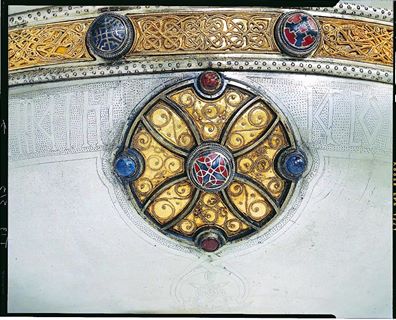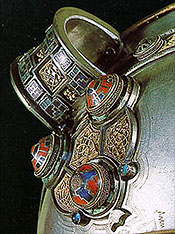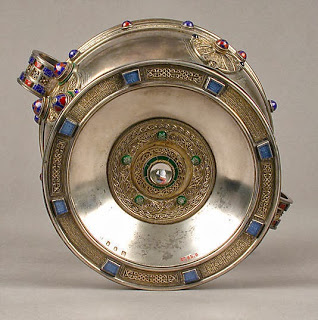Christian Metalwork
The Tara Brooch 8th Century AD
The Tara Brooch was found on a beach in Bettystown, Co Meath. It dates from the 8th Century AD. It is an Annular Brooch – this consists of a ring and a pin. It was used to fasten a cloak onto clothes. The brooch is made of silver which was cast and then gilt (covered with gold). The entire surface of the brooch – back and front – is elaborately decorated.
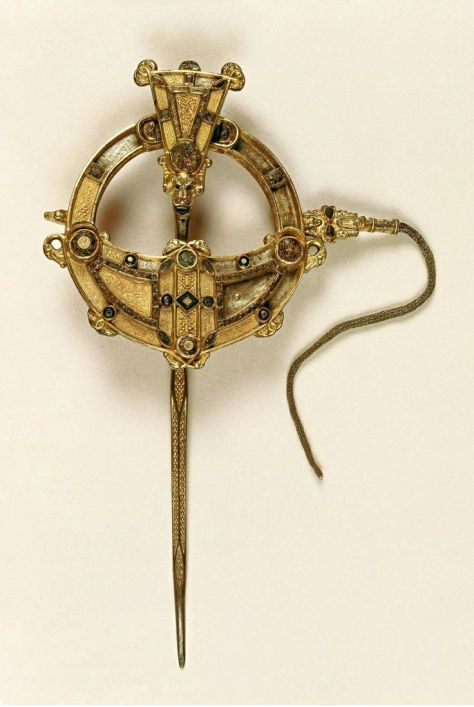
(B) The back is better preserved than the front, probably because the decoration is cast and not filigree. The back is flatter than the front. The motifs consist of scrolls and spirals and is more similar to the La Tène decoration of the Iron Age than the Early Christian Style.

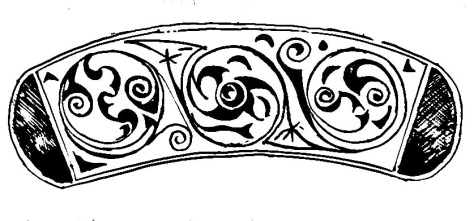
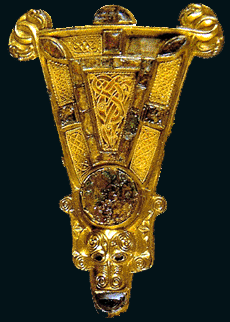
(D) A silver chain made of plaited silver wire is attached to the brooch by means of a swivel attachment. This swivel contains animal heads and two tiny cast glass human heads.
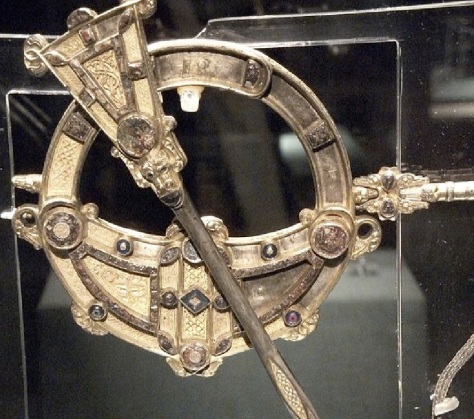
The Ardagh Chalice ( 8th Century AD)
The Ardagh Chalice is one of the finest masterpieces of the Early Christian Church. It was found near Ardagh, Co Limerick in the 19th century by a boy digging potatoes. The Chalice dates to the 8th Century AD and it was used to hold wine during the mass ceremony. The shape of the Chalice was influenced by Roman tableware. The Chalice is composed of more than 250 seperate pieces – silver , gold, enamel, glass, amber and semi-precious stones.
The bowl and the foot of the chalice are made of silver which was beaten into a rounded shape and then polished on a lathe.
The bowl is attached to the stem and the foot by a bronze pin.The stem is made of cast gilt bronze alloy.
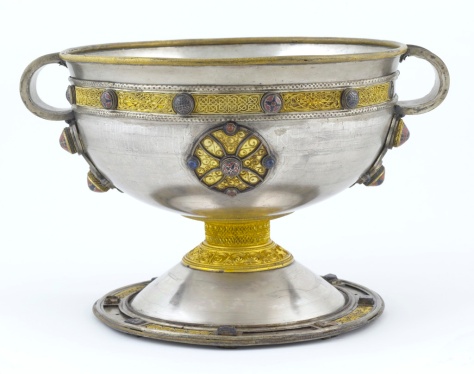
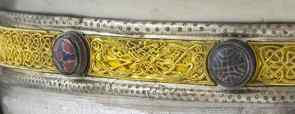
Below this band, running around the entire bowl is an inscription of twelves names – the names of eleven apostles and St. Paul, ( Judas the twelfth Apostle is excluded). Museum historian Raghnall O’ Floinn believes that the repeated use of the number twelve is significant.Perhaps it is symbolic of of the 12 Apostles who shared the wine with Jesus at the last supper.
